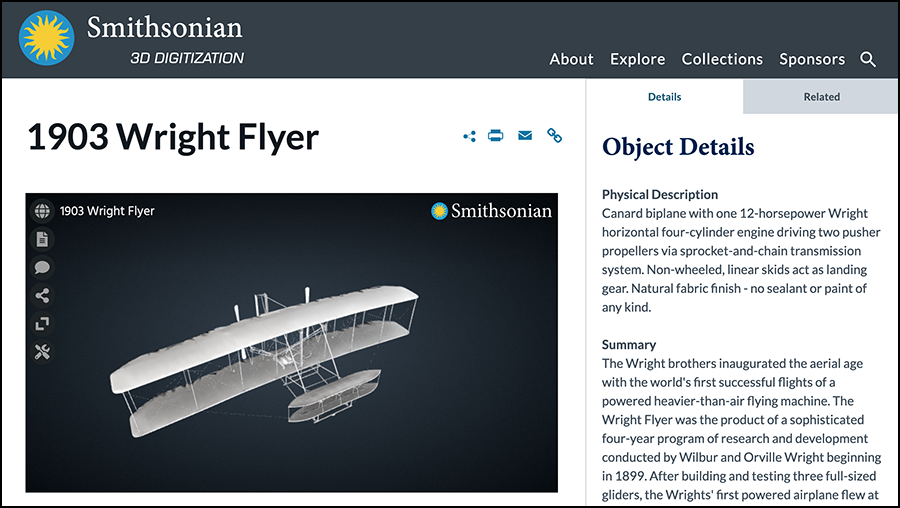The Smithsonian Institution has more than 155 million unique items and specimens with only 1 percent of the its collection on display at any one time. To provide more access, the Smithsonian has embarked on a program to digitize and post items online using 3D technology.
There are more than 2,500 free 3D scans that can be viewed online or downloaded for personal and educational purposes. This small but growing collection is available from the Smithsonian website. There you will find scans of presidential portraits, coins, ceramics, Apollo 11 spacesuit and capsule, hominin fossils, prehistoric artifacts, clothing, and more.
With a mouse or touch screen device, the images can be rotated and zoomed to see details on all sides of the object. Some images have layers to view hidden parts.
Use 3D Scans in eLearning@UNG (D2L) Courses
These digital models can be embedded and viewed in 3D in an eLearning@UNG (D2L) file.
The Smithsonian 3D player makes all of the zoom and rotate features available to students in D2L.

How to Embed a 3D Smithsonian Scan in a Course
The Smithsonian provides a link to the 3D model. There is no need to download the file.
To add a 3D model to an eLearning@UNG (D2L) file:
- Create a file in a course (Module Name > Upload/Create > Create a File).
- Select an image from the Smithsonian 3D collection.
- Click the Share Experience icon (three dots with connected lines) and copy the iframe code.
- In the D2L file, click the Insert Stuff icon on the Brightspace Editor upper-level icon row.
- Click the Enter Embed Code link from the drop-down menu.
- Paste the iframe code in the box.
- Click Next, and then click Insert.
- Add a title, text or photo.
- Click Save.
The interactive image is now in the course.
3D Possibilities
3D file formats such as .obj and .glb can be downloaded from the Smithsonian website and used in 3D programs. Still images are also available for download.
Below are two examples of how 3D models can be used.
Resources
Smithsonian 3D Digitization: https://3d.si.edu/
Explore 2,568 3D Smithsonian Scans

